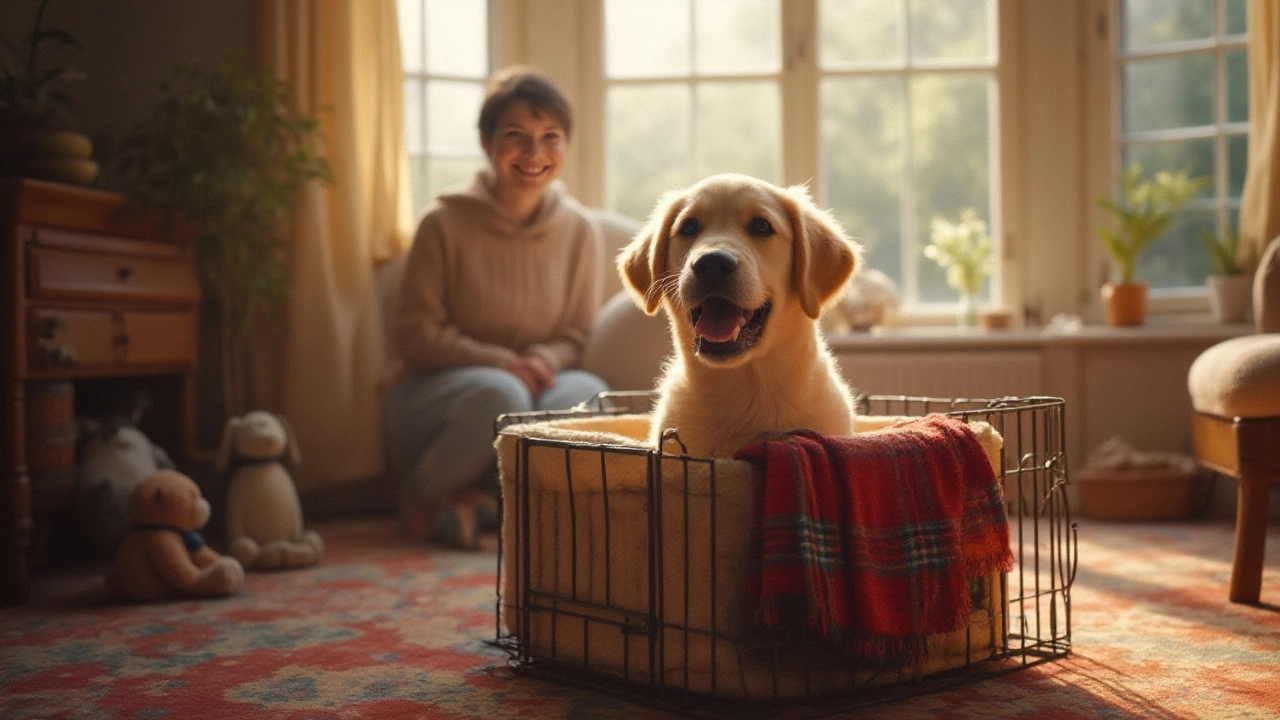Safe Crate Setup: How to Keep Your Dog Comfortable and Secure
Got a new puppy or an older dog that needs a calm spot? A crate can be a lifesaver, but only if it’s set up right. Below you’ll find straight‑forward steps that turn a plain metal box into a cozy, safe den your dog will love.
Pick the Right Size and Style
First thing’s first – the crate must be the right size. Your dog should be able to stand, turn around, and lie down without feeling cramped. Measure your dog from nose to tail, then add a few inches. If you’re unsure, go a bit bigger; you can always add a divider for a puppy.
There are plastic, metal, and soft‑sided crates. Metal crates are sturdy and great for dogs who chew. Plastic crates feel more like a den and work well for travel. Soft‑sided crates are lightweight but not ideal for aggressive chewers. Choose what matches your dog’s habits and the space you have.
Location, Light, and Noise
Place the crate in a low‑traffic area where your dog can still see the family. A quiet corner of the living room or a bedroom works well. Avoid kitchens or noisy laundry rooms – sudden sounds can startle a crate‑trained dog.
Natural light helps keep the crate feeling open, but direct sunlight can overheat the space in summer. Aim for a spot with indirect light and a comfortable temperature. If you live in a colder climate, add a blanket or a crate pad to keep the floor warm.
Remember, the crate should feel like a safe retreat, not a punishment. Introduce it with treats and praise. Toss a few favorite toys inside, let your dog explore, and always keep the door open during the first few sessions.
Covering the Crate – When and How
Covering a crate can create a den‑like darkness that helps some dogs settle, especially at night. A lightweight cover that drapes over the top but still allows airflow is best. If you’re using a cover, check that it doesn’t trap heat or restrict air.
Watch your dog’s reaction. If they seem anxious or try to escape, remove the cover. Some dogs love the cocoon effect; others feel trapped. Test for a few minutes each day and adjust as needed.
Safety Extras You Can’t Skip
Make sure there are no sharp edges or loose wires near the crate. Secure any cords that could be chewed. Add a chew‑proof mat on the floor – it protects paws and makes cleaning easier.
Keep the crate door latch in good working order. A broken latch can turn a safe space into a hazard. Check it weekly, especially if your dog is a strong chewer.
Finally, never leave a crate unattended with food or toys that could be swallowed. A simple, sturdy bowl for water is fine, but avoid large bones or hard chew toys that could break inside.
With the right size, location, covering, and safety checks, your crate becomes a trusted haven. Your dog will learn that the crate is a calm place to chill, nap, and feel secure – whether you’re at home or away.
Ready to set up your crate? Grab a blanket, a couple of treats, and start small. In just a few days you’ll see your dog settle in, and you’ll have one less worry on those long workdays.
- Morgan Ainsworth
- 0 Comments
Should I Put a Blanket in My Dog's Crate? Pros, Cons, and Tips
Not sure if you should put a blanket in your dog's crate? Learn benefits, risks, and expert tips for safe and comfy crate bedding your pup will love.
View More
